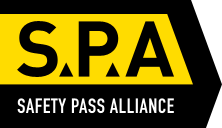A Kidderminster carpet company and a Surrey-based firm have been fined after a large pressure vessel, in which carpet fibres are dyed and processed, exploded, propelling the vessel’s quarter-tonne lid six metres into the air.
No-one was injured in the incident at Brinton Carpets Ltd’s site at Halesfield, Telford on 4 June 2013, but the dangerous incident could have been prevented.
The Health and Safety Executive (HSE) carried out an investigation and today (10 Sept) prosecuted Brintons Carpets Ltd, the owner and user of the pressure vessels and Allianz Engineering Inspection Services Ltd, who were contracted to carry out periodic thorough examinations of the dye vessels.
Telford Magistrates’ Court heard that each of Brintons Carpets’ four stock dye vessels, each described as industrial pressure cookers, were pressurised while in use.
During a production run, one of the vessels exploded. The lid, which weighed approximately 250kg, was torn off its locking mechanism and hinges and hit the roof of the factory six metres above. Such was the force of the collision that it left a dent in one of the factory roof girders.
One worker was standing just a few feet from the where the lid came to rest.
The explosion was found to have been caused by a failure of the vessel’s regulator and pressure relief valve. HSE found Brintons Carpets Ltd had not ensured that suitable and sufficient maintenance of the vessel’s safety devices was being carried out. In addition to this, the periodic statutory thorough examinations had not been completed for three years.
A Written Scheme of Examination was in place at Brintons Carpets Ltd, which included the stock dye vessels in question. Although Allianz Engineering Services Ltd were carrying out periodic thorough examinations on the other pressure equipment on site, the HSE found that the four stock dye vats had been overlooked for a number of years. Allianz Engineering Services Ltd, therefore, failed to carry out the required examinations on the vats properly.
Brintons Carpets Ltd of Stourport Road, Kidderminster, Worcestershire, pleaded guilty to breaching Regulation 12 of The Pressures Systems Safety Regulations 2000 and was fined £10,000 and ordered to pay costs of £1,174.
Allianz Inspection Services Ltd of Ladymead, Guildford, Surrey, pleaded guilty to breaching Regulation 9(2) of The Pressures Systems Safety Regulations 2000 and was fined £13,000 and ordered to pay costs of £1,111.
Speaking after the hearing, HSE inspector Lyn Mizen said:
“If a piece of pressure equipment fails and bursts violently apart, the results can be devastating to people in the vicinity. It was a matter of pure luck that no one was seriously injured in this incident.
“There are clear standards set out in the regulations and strict inspection regimes whereby the user has a duty to ensure that equipment, and its safety devices, are properly maintained. This is backed up by the periodic thorough examinations by competent persons to ensure this is happening and is appropriate and suitable.
“Sadly in this case the user of the pressure system and their competent person both failed in their duties.”
For further information on working safely with pressure systems, go tohttp://www.hse.gov.uk/pressure-systems/about.htm



















